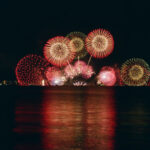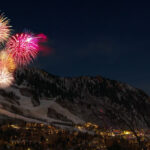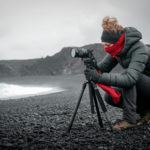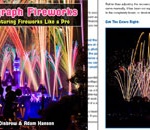Winter photography, especially when snow is involved, comes with some pretty tough challenges. All that white snow with the beautiful blue sky makes a camera go mad trying to figure out the correct exposure. If you’re the type of photographer who prefers to shoot in auto or program mode most of the time, you’ll find it difficult to nail the exposure. This is a good time to switch over to manual mode. Photographer Brendan van Son has some more tips:
1. Exposure
The most difficult thing when shooting in the snow is nailing the exposure. If the opening paragraph had you thinking “what exposure should I use then?” here’s the answer: always shoot at least one stop over what the camera tells you is the right exposure.Use the exposure compensation button or the meter and then switch to manual and tweak the exposure so that that the meter indicates that you are one stop over exposed. Why? With all that white snow, your camera will be fooled into thinking that the scene is too bright and thus under-expose to make it 18% grey (or middle grey). That will make the scene too dark. Over-exposing compensates for this “flaw.” But, always take some test shots to check that you are in the zone.
2. Shoot with the sun behind you

Use the sun like a flash.
This is one time when it’s okay to shoot with the sun behind you. If you’re shooting into the sun, when it is closer to the horizon, you’ll have problems nailing the exposure. As van Son puts it, “You want to use the sun like a flash.”
3. Go wide
Use a wider lens and get close to the action. Wide angle lenses tend to make things larger than life, which is what you want if you’re shooting snowboarders and skiiers. Van Son suggests the 16–35mm or even the 17–40mm for best results.
4. Crop tight and zoom
When composing, try zooming in and cropping tight. Fill out the space with the subject but leave some space in the direction that the skater or snowboarder is moving. This creates a sense of movement which is what most sport and action photographers look to achieve in their images.

Close up shots tend to be more dramatic.
For cropping, a slightly longer lens, such as a 70–200mm is a better bet.
5. Pack extra batteries
Cold weather drains power from camera batteries much faster than mild weather. Always ensure that the batteries are fully charged and pack extra batteries if you plan to shoot for extended periods of time.

Bring extra batteries so you don’t miss any action.
Though van Son’s video focuses on skiing and snowboarding photography, his advice applies to any photo shoot in a snowy location. Next time you shoot in the snow, put these tips into action to make sure you get great photos.
Like This Article?
Don't Miss The Next One!
Join over 100,000 photographers of all experience levels who receive our free photography tips and articles to stay current:






Leave a Reply